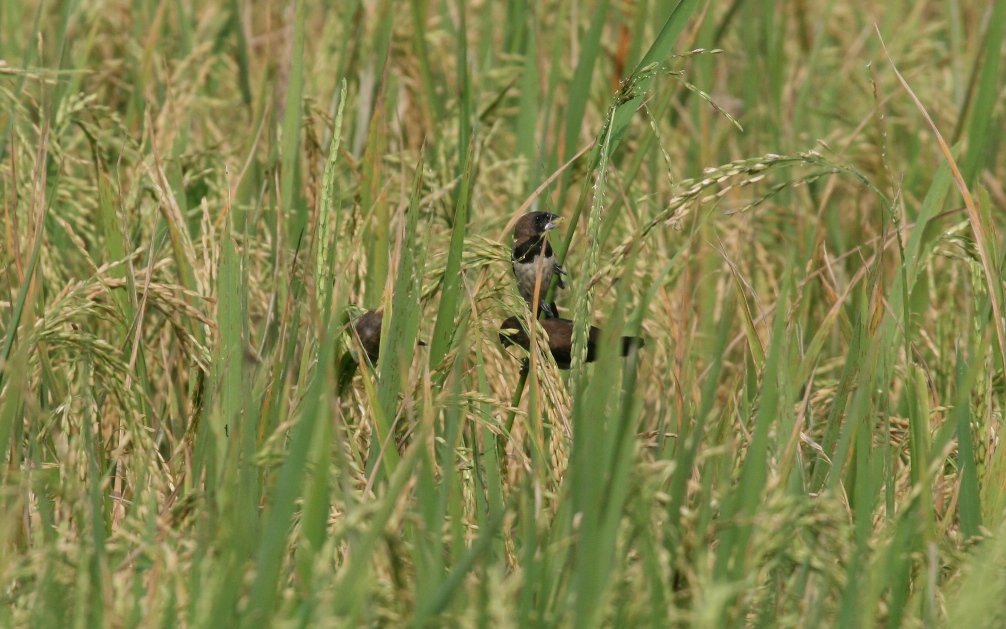
To all but the greediest rice and spirulina farmers of Southeast Asia, any member of the genus Lonchura is a joy to watch. The munias, or mannikins, or silverbills, as the genus’ members are called, are finches belonging to the Estrildidae, and the 40-odd species range from Africa throughout South and Southeast Asia to Australia.
The Indonesian island of Java, which I was both lucky and happy to visit a few weeks ago, is what 5 species of munias call their home, the White-capped Munia, White-bellied Munia, Javan Munia, White-headed Munia, and Scaly-breasted Munia. Well, during a trip to Java in 2012 I observed a flock of munias next to the road that showed white rumps. None of the regular munias on Java show white rumps, but the White-rumped Munia on neighbouring Sumatra does, as does the Black-faced Munia of neighbouring Bali. And I do struggle with the explanation of simply being mistaken in seeing a big, fat, white rump on several brown birds where really there was nothing but several brown birds, but that’s the way birding goes: no proof, no record.
Anyway. The number of five clearly shows that the munias are worthy of a birder’s attention when he has a Queens birder to beat in a year list battle, and so I spent my time around rice fields in a constant state of alertness and vigilance to make sure I got the most out of the five potentials.
Getting the most out of the munias is no easy matter as they are easy to encounter but not easy to see clearly. When they are foraging amongst the rice blades, they are nothing but half-concealed brown shapes – as you can see in the image above this post, which shows Javan Munias. When you see them in flight, they are nothing but brown shapes against a blinding equator sky. Only when they temporarily fly from a rice field into adjacent bushes to roost or scan for dangers is when the intrepid birder has a decent chance to filter out the surprise species amongst the masses of Javan and Scaly-breasted Munias.
Little did I realize what kind of surprise a bush beside a rice fields with some munias would hold for me on that fateful moring of April 5th…
Upper left – Javan Munias. Cool & common. Below, partly covered by leaves … Scaly-breasted Munia. Nice & expected. Lower right … by the Great Ghost of Audubon, what on earth is THAT?!
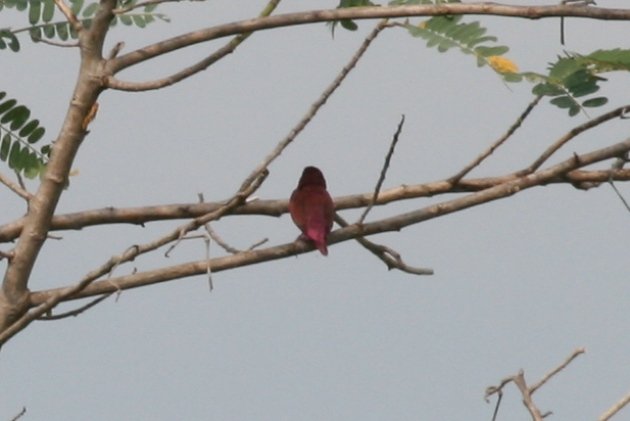
A red, chubby finch with a pointy tail? Oh nice, clearly this must be a Red Avadavat, another estrildid finch of South and Southeast Asia!
Then the bird turned around, and the Avadavat hypothesis evaporated – wrong bill colouration, wrong bill structure, wrong pattern on breast, wrong everything, just wrong.
No Avadavat. But what could it be?
The bird turned once more to show me its broadside, and a creepy feeling of familiarity set in…
The upper picture shows my mystery red finch. The lower one (clearly not by me, but by Adam Riley as everyone can see by the … slight differences in quality) shows a very common Scaly-breasted Munia. If you just ignore the red and mentally turn it into shades of brown, there is essentially no difference. So, if it looks like a Scaly-breasted Munia and quacks like a Scaly-breasted Munia, it probably is a Scaly-breasted Munia, right?
But where does the red come from?!
This is a serious question to you, the reader. That precisely is the mystery I just cannot come to grasps with. Mutations and genetic fuddle-ups that produce blacks, or whites, or pale browns, heck – even yellows are known to me. But what kind of metabolic twist would turn a brown bird to red?!
The indispensable Wikipedia offers a possible, yet completely different explanation: “In Southeast Asia, the Scaly-breasted Munia is trapped in large numbers for Buddhist ceremonies, but most birds are later released.”
The idea that this bird was caught, its feathers dyed red to make it nicer for a religious ceremony, and later released, sounds some kind of plausible. However, around 90 % of Indonesia’s population is Muslim and the cage bird trade is a huge, huge problem. I am therefore not sure how likely a Buddhist ceremony with dyed wild birds and the subsequent release of these birds is on Java.
Any thoughts on this, my dear reader?
What is this bird, and if it is a Scaly-breasted Munia,
where by all that’s avian does the RED come from?
.


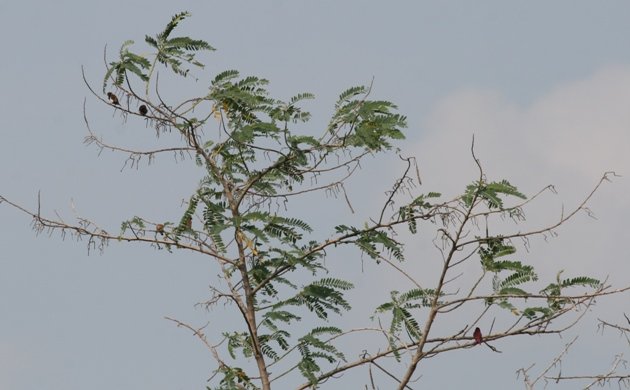
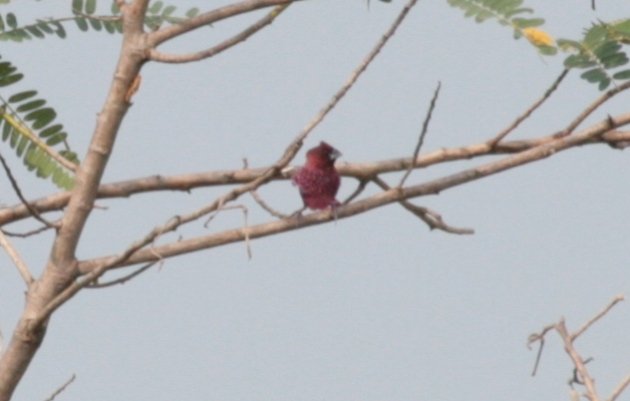
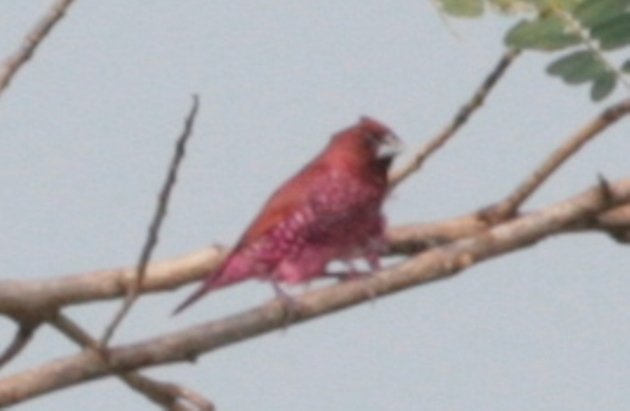
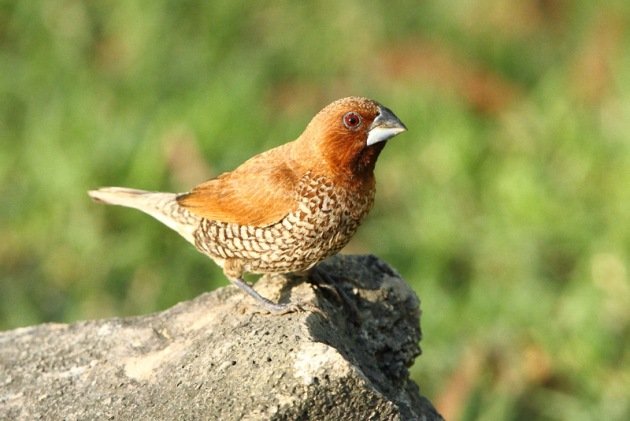








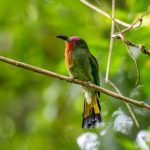

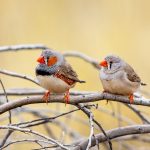
I have seen oddly coloured birds in and around the Hindu festival of Holi. Participants throw coloured water and powdered paint. This collects in coloured puddles and the birds bathe in it. That probably doesn’t solve your problem. The colour is too uniform to have been self administered. The Buddhist ceremony or a jolly jape sounds feasible.
Jochen…who did you tell you were going to Java? We didn’t know, so you can’t blame us! I think someone was out to trick you and also knew you needed to write a blog and would need something interesting to write about! 🙂